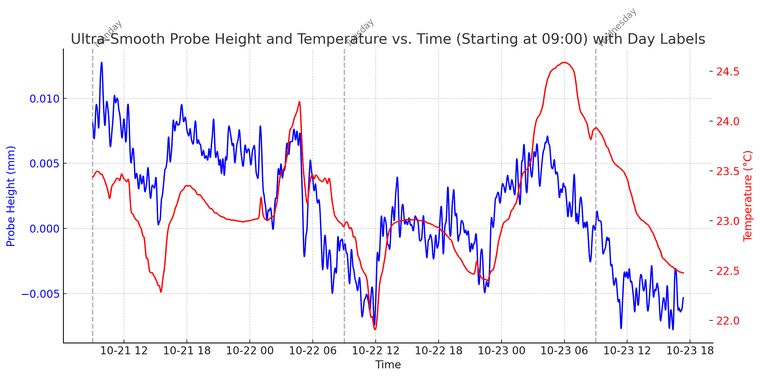longterm probe reliability testing
-
Hi all,
we are trying to test the reliability of our new loadcell probing system to see if it lasts 10 years.
it equals to a load of probes (213.000) which I plan to test in 4 stages (53.250 per test)
I wanted to test it with a loop;
while iterations<53250 G30 P{iterations} Z-9999 ;endif G30 P53250 Z-9999 S-1But quite quickly I get the error "Error: G30: Z probe point index out of range"
Is there a different way to do these long tests?
-
@SanderLPFRG What are you trying to measure? If you just want the measured height, use G30 S-1 without a P or Z parameter. This should report in the console the measured height each time. You can probably write the result to a log file on the SD card.
The G30 P parameter is used to measure the height error from the Z datum, for use in bed plane correction. I think the maximum number of points is 32. These are stored in memory, which is limited. I don't think this is the data you want, or need, to collect.
See https://docs.duet3d.com/en/User_manual/Reference/Gcodes#g30-single-z-probe
Ian
-
@SanderLPFRG
You might find this helpful, this is a homing then testing script we use when testing new probes or trying to isolate probe drift;Start squence ; Home machine and then set postion for Probing ;; reduce accelerations to avoid false triggering M201 X500 Y500 ; reduce acceleration to avoid false triggering ;== Home Axis X M98 P"homex.g" ;== Home Axis Y M98 P"homey.g" ;== Home Axis X M98 P"homex.g" ;== Home Axis Z M98 P"homez.g" ;start sensor test loop while true ; Home machine and then set postion for Probing G28 Y G28 X G1 X110 Y170 F6000 ;Probe bed and save offset value G30 s-1 echo >>"0:/sys/debug/probe.csv" {sensors.probes[0].lastStopHeight},{sensors.analog[1].lastReading},{sensors.analog[0].lastReading} ;Lower bed ready for restart G1 Z10This keeps track of the probes z position when triggered, as well as the bed and nozzle temps.
-
My goal is to test a shitload of probes, and see how much it starts to deviate after thousands. Your script might actually work, let me test
-
 undefined SanderLPFRG has marked this topic as solved
undefined SanderLPFRG has marked this topic as solved
-
@Notepad works really well, thanks!
Got good results too, and plotted them in graphs! which shows a fun correlation of the temperature drift of our probe!
Thanks for the script! Appreciate it

-
@SanderLPFRG Happy to help. Plus it looks like the probe is really nice and accurate.
Ive always been personally interested in loadcells as it looks like it fixes most of the issues I have with Piezo sensors. Any advice on where to get started?
-
@Notepad Thanks! it has been a long journey for us but generally, we found;
- Digital versions of chips (fe HX711 / HX717) offer (for us) a too low sampling rate (max 320Hz) so you would need to probe slowly, or it may be too inaccurate.
- Analog versions are susceptible to noise, especially within a 3D printer with all the active stepper motors. The only way we got it working is by making a custom CANbus PCB that sits only 7cm from the load cell and there filters and amplifies the analogue signal. We then read it out as an analogue probe in Duet
-
@SanderLPFRG super interesting! will you also test at elevated bed temps (60/80/100c) to see whether raised ambient from bed has an effect? would be interesting for bed meshes etc.
-
@oliof yeah load cells are susceptible to temperature differences (see the graph above) but you can correlate that enough to avoid issues.